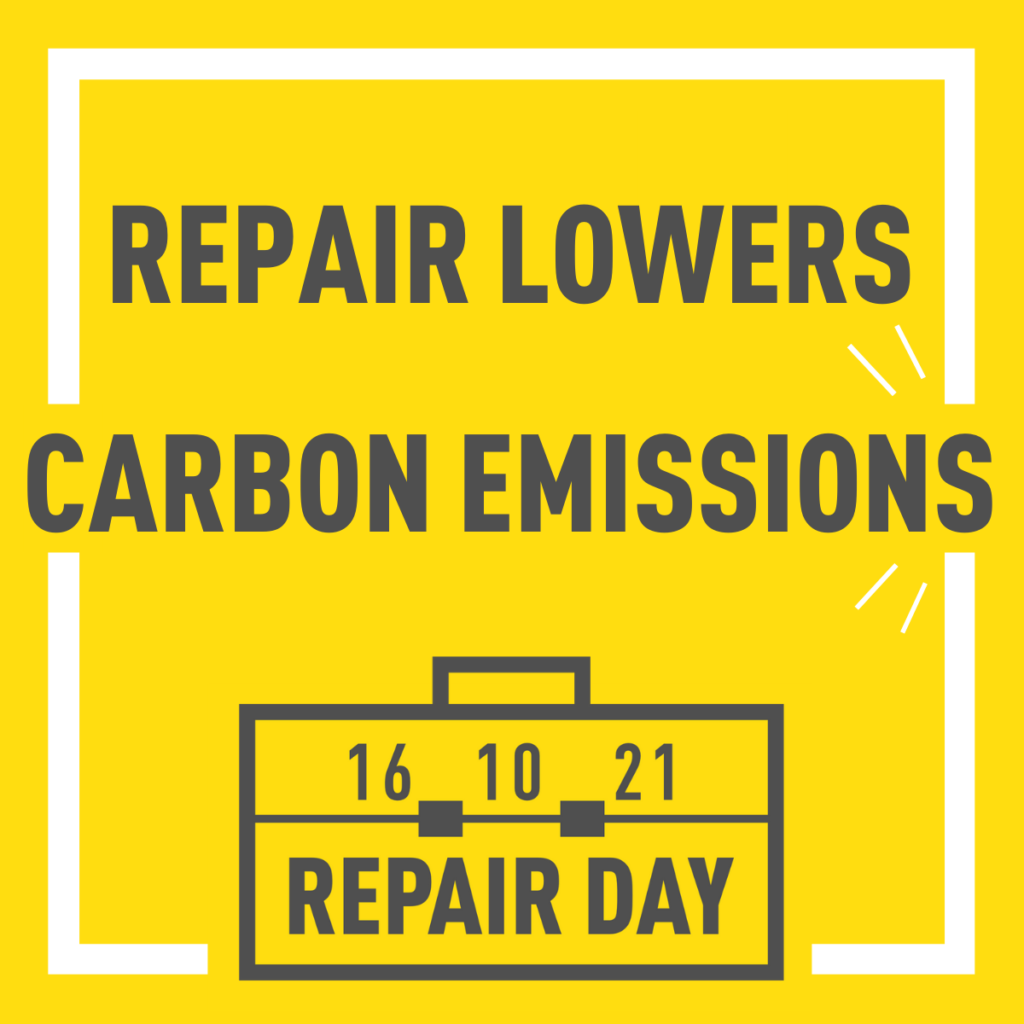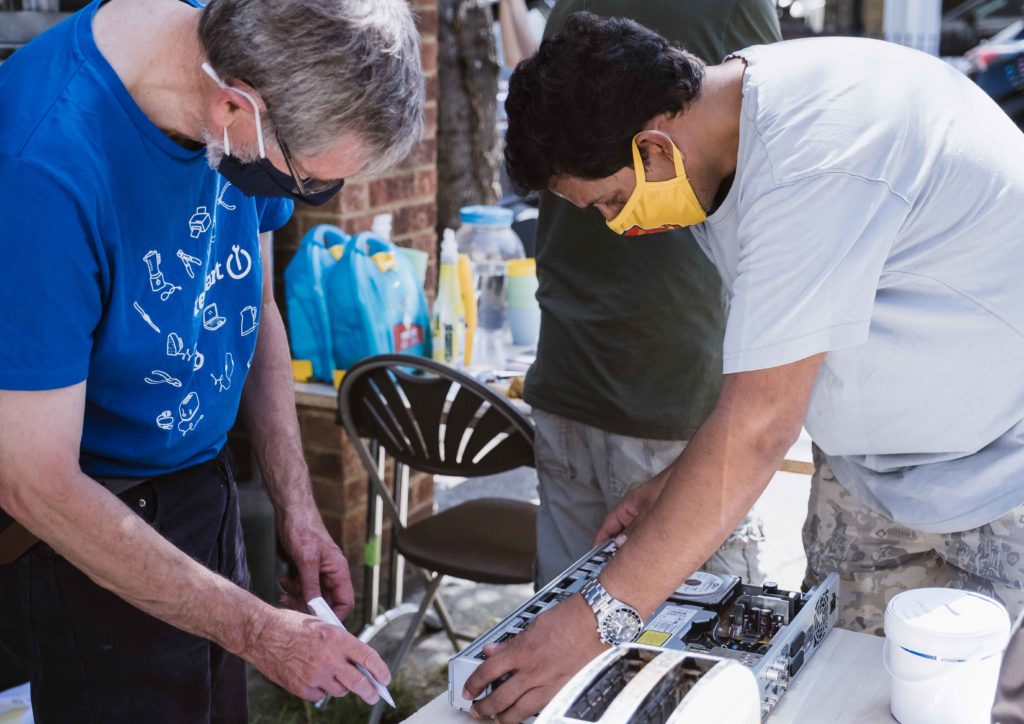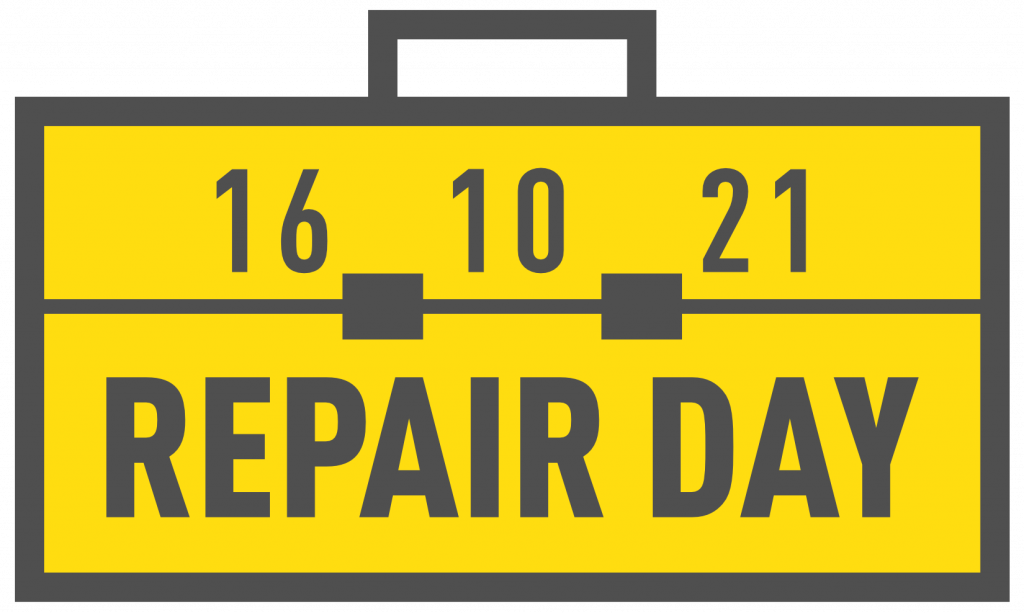Save the date – October 16th is the fifth annual International Repair Day!
Last month, the IPCC produced a distressing report on the climate crisis which has made the efforts of the Right to Repair movement all the more urgent. Furthermore, with COP26 coming up next month, there is no better time for us to concentrate on how our work as a repair community is vital in the ongoing fight against climate change. In light of this, the theme for this Repair Day 2021 is: repair lowers carbon emissions.

So what does repair have to do with carbon emissions?
One of the key contributors to carbon emissions is manufacturing – and that includes electronics. From mining resources to processing materials to shipping products, much of the carbon impact of our devices occurs before they are even turned on.
The United Nations found that “natural resource extraction and processing makes up approximately 50 per cent of the total greenhouse gas (GHG) emissions produced worldwide. Additionally, if current trends for the consumption of goods, including electronics, continue, greenhouse gas emissions from resource extraction and processing will increase by 43 per cent from 2015 to 2060.”
To bring this a bit closer to home, let’s look at individual devices. For your average smartphone, it is estimated that 79% of its CO2e impact occurs before it is used by the consumer. For a product like a blender, this number is around 84%. This starkly puts into perspective the impact that buying new instead of repairing or buying second-hand has on our carbon footprint.

Partners of the Open Repair Alliance have been looking at these statistics too and examining our own data from community repair events to see how repair can help this problem. The Restart Project found that 432 tonnes of carbon emissions were avoided by volunteers fixing devices at over 2,000 community events. When you repair a broken item, you no longer have to buy a new one, avoiding new emissions.
Scaling this reduction in consumer emissions globally would have a massive impact on our planet. The European Environmental Bureau found in 2019 that extending the lifetime of the EU’s stock of smartphones, notebooks, washing machines and vacuum cleaners by five years would save almost 10 million tonnes of emissions (CO2eq) annually by 2030… And even just a one-year extension would result in 4 million tonnes of emissions savings annually, equivalent to taking 2 million cars off the roads.
We can’t do this though without the Right to Repair, a thriving professional repair economy, and our incredible repair community. In order to repair our devices, we need better legislation to allow repair. This includes access for everyone to affordable spare parts and repair manuals; long-term software and security updates; and requirements that ensure products are designed to last and to be repaired.

How are you going to celebrate?
We know that things are not quite back to normal in many places yet but we hope that as many people can get together – either in person or online – to celebrate Repair Day.
You can submit your event, initiative or endorsement with this form. We’ll add it to a global map of confirmed activities on and around Saturday 16 October.
And there’s plenty of ways that everyone can celebrate at home too. These include:
- repairing an item that you’ve had lying around for a while;
- joining an online event;
- sharing your experience on social media using the hashtag #RepairDay;
- passing on your knowledge by helping someone else with a repair;
- or supporting a local repair business.
However you are celebrating the day, we’d love to hear about it. We’ve updated a social media toolkit for Repair Day, in 6 languages with more being added – download it here. You can also sign up for our newsletter for updates.